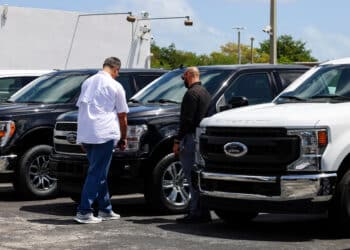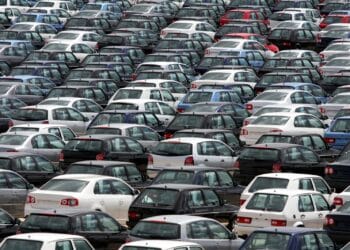Used Vehicle Sales, Volume on the Rise in 2017, Cox Says

LAS VEGAS — Sandy Schwartz, president of Cox Automotive, predicts between 41 and 43 million used cars will “change hands” in 2017 between both the retail and wholesale market, which is a large increase that emphasizes a need for manufacturers to move away from incentives, and for dealers to adjust their ratio of new to used cars, he said.
“The key number is how many pre-owned vehicles are getting sold again: whether in a whole sale space, at an auction, digitally, at a car lot, dealer to dealer, or individual to individual,” Schwartz said at last week’s 2017 Conference of Automotive Remarketing. “What’s going to happen if we have more than 2 million cars out there over what we have today?”
In 2016, total used vehicle retail sales hit 38.5 million units, up 0.6% over the 38.3 million sold the year prior, according to Edmunds Inc.’s 2016 used vehicle market report released in February. Although, Schwartz’s prediction of 43 million is more encompassing of wholesale transactions overall, it’s the increase of 3 million off-lease vehicles that could surge retail sales and lower used car values, he said.
“Dealers are going to have to work on their ratio of new cars to used cars,” Schwartz said. “We have some selling 1.5 new cars for every 0.75 to maybe 1 used car — that is going to change.”
This could impact captives, which have pushed their manufacturer’s vehicle’s through incentives and leasing, Anil Goyal, senior vice president of operations at Black Book, previously told Auto Finance News. On the other hand, a move away from leasing and more into used vehicles is good news for other financial institutions that don’t profit on the sale of the vehicle itself.
However, if used vehicle prices were to drop dramatically to the point where borrowers owe more on the loan than the car is worth, than it would be bad for all lenders. You would need used car values to drop and a sharp rise in unemployment for any sort of bubble burst, Consumer Portfolio Services‘ President and Chief Executive Charles Bradley told AFN during the National Automotive Dealers Association 2017 Convention and Expo. The outlook for the economy remains positive still, he added.
Yet, Schwartz points out that car prices are higher than ever. The average price of a new car rose to $35,496 last year (which he mentioned is skewed higher because of luxury brands), while the average price of a used car now sits at $19,872.
That rise in price has not been matched by a rise in U.S. incomes, and “If there is one thing that gets in the way of buying cars and people not making that move, it’s affordability,” he said.














